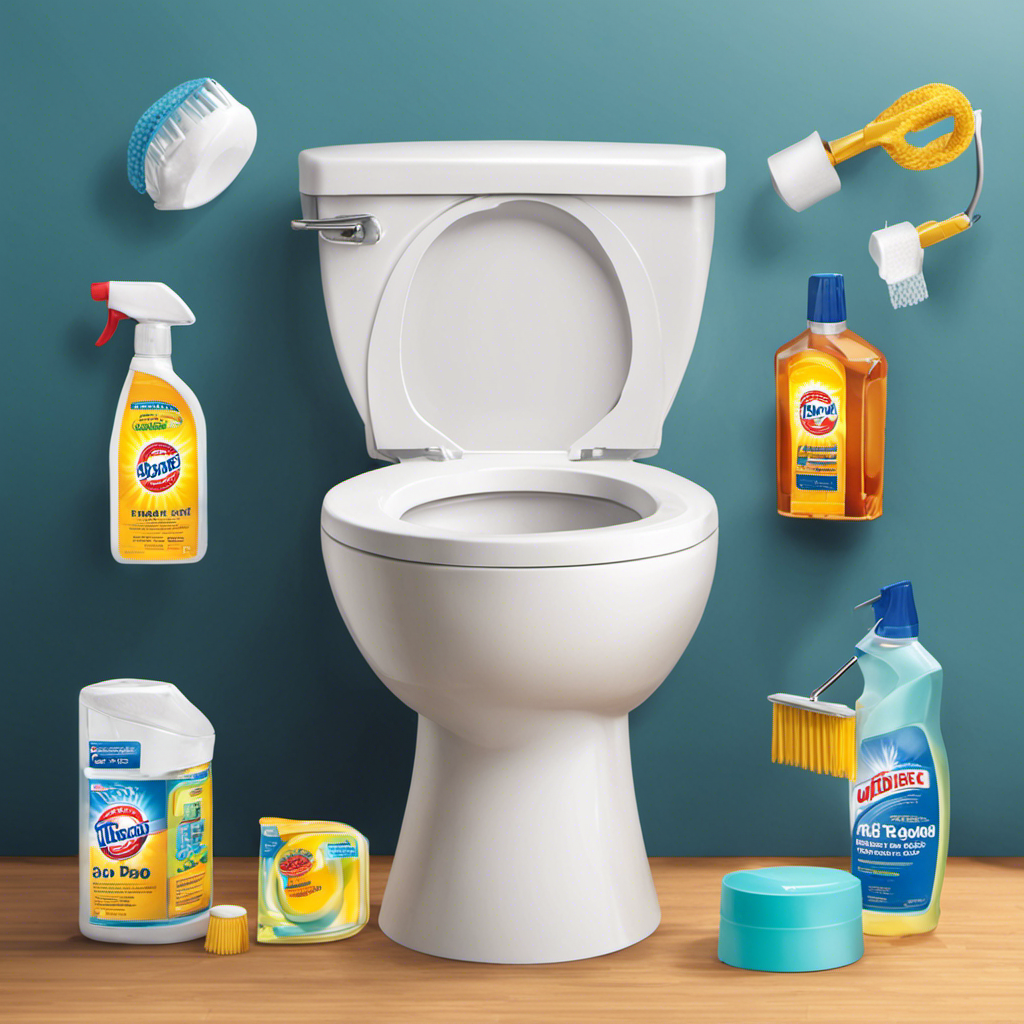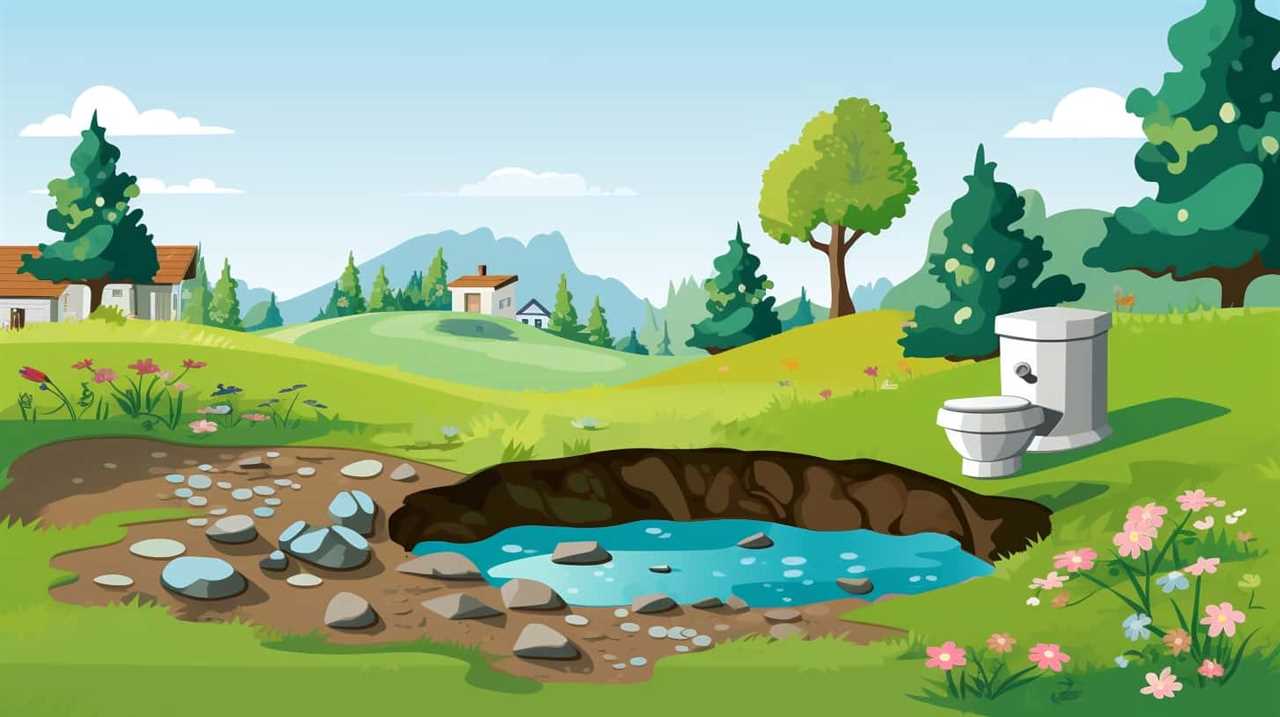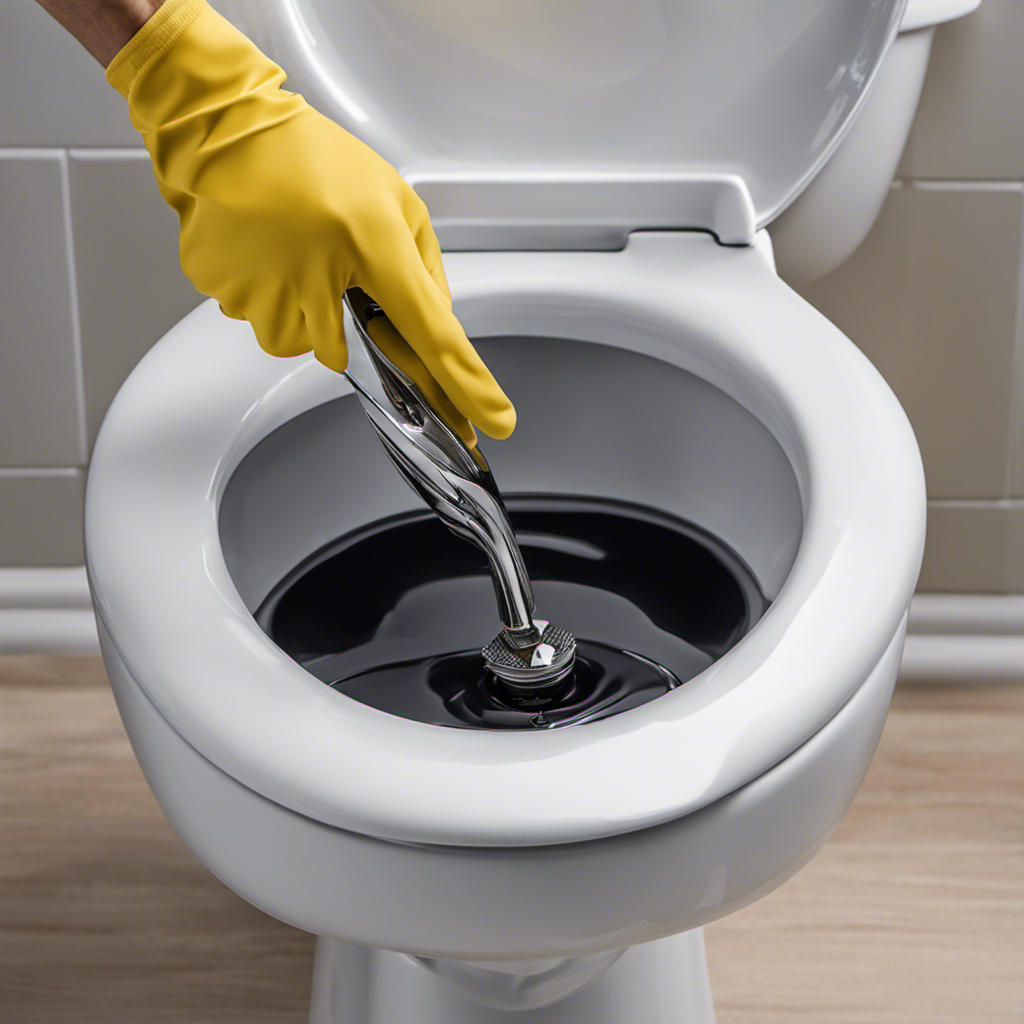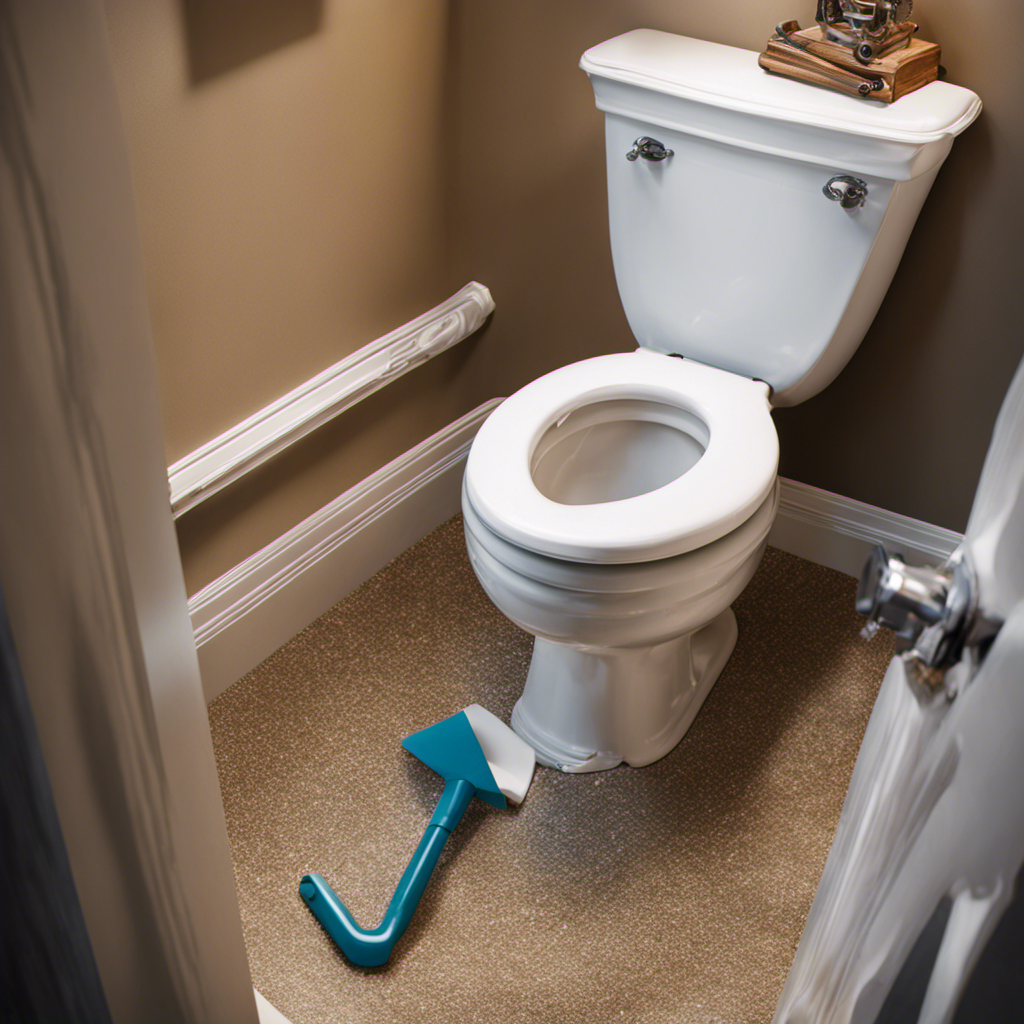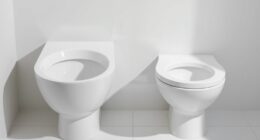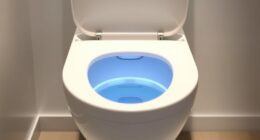I know what you’re thinking: unclogging a toilet can be a messy and frustrating task. But fear not, because I’ve discovered a simple and effective solution using dish soap.
In this article, I will guide you through the step-by-step process of unclogging your toilet with dish soap. With just a few supplies and a little bit of elbow grease, you’ll have your toilet back up and running in no time.
So let’s get started!
Key Takeaways
- Dish soap can effectively break down toilet clogs.
- Alternative unclogging methods include using a plunger or drain snake.
- Safety precautions such as wearing protective gloves and eyewear should be taken.
- Consult a professional plumber if the clog persists or if unsure.
Assess the Severity of the Clog
Before attempting any unclogging methods, it’s important to assess how severe the clog is. Assessing the clog severity is the first step in troubleshooting clog issues effectively.
To determine the severity, start by observing the water level in the toilet bowl. If it’s too high or overflowing, the clog is likely severe.
Next, check the flushing power. If the water drains slowly or doesn’t drain at all, it indicates a significant blockage.
Another indicator is the presence of gurgling sounds or foul odors coming from the toilet. These signs suggest a more serious clog.
Gather the Necessary Supplies
First, you’ll need to gather the supplies you’ll need for this task. Here are the essential items you should have on hand to prevent toilet clogs and perform a DIY unclogging:
-
Plunger: A reliable plunger is a must-have tool for unclogging toilets. Ensure it has a strong suction cup and a sturdy handle for effective plunging.
-
Rubber gloves: Protect your hands from any potential mess or bacteria by wearing rubber gloves.
-
Bucket: Have a bucket nearby to collect any excess water or debris during the unclogging process.
-
Toilet auger: In case the plunger fails to clear the clog, a toilet auger can come in handy. It can reach deeper into the pipes to remove stubborn obstructions.
-
Hot water: Boiling water can be an effective tool for breaking down minor clogs. Keep a kettle or pot of hot water ready.
With these supplies at your disposal, you’ll be well-equipped to tackle any toilet clog prevention or DIY unclogging task.
Now, let’s move on to preparing the dish soap solution.
Prepare the Dish Soap Solution
When it comes to unclogging a toilet, dish soap can be a highly effective solution. Its chemical composition helps to break down the blockage and make it easier to flush away.
However, it’s important to note that there are also alternative methods available, such as using a plunger or a toilet auger, depending on the severity of the clog.
Additionally, it’s crucial to take safety precautions when unclogging, such as wearing gloves and ensuring proper ventilation in the bathroom to avoid inhaling any fumes.
Dish Soap Effectiveness
Dish soap is really effective in unclogging toilets. When it comes to tackling stubborn clogs, the power of dish soap should not be underestimated. Here’s why:
-
Soap bubbles: Dish soap produces a significant amount of soap bubbles when mixed with water. These bubbles help to dislodge and break down the clog, making it easier to remove.
-
Grease removal: Dish soap is specifically designed to cut through grease and oil. This makes it particularly effective in unclogging toilets that may have accumulated grease or other oily residues.
-
Chemical reaction: Dish soap contains surfactants that react with water to create a slippery and lubricating effect. This helps to loosen the clog and allows it to pass through the pipes more easily.
Alternative Unclogging Methods
If you’re looking for alternative methods to tackle stubborn clogs, you might consider using a plunger or a drain snake. However, there are also other toilet unclogging hacks and natural methods that you can try before resorting to harsh chemicals or calling a plumber. One effective method is using a mixture of dish soap and hot water. The soap helps to lubricate and break down the clog, making it easier to flush away. To use this method, simply pour a generous amount of dish soap into the toilet bowl and let it sit for a few minutes. Then, pour hot water into the bowl from waist height to create enough pressure to dislodge the clog. Repeat if necessary. Here is a table summarizing the different natural toilet unclogging methods:
| Method | Ingredients | Steps |
|---|---|---|
| Dish Soap and Hot Water | Dish soap, hot water | 1. Pour dish soap into the toilet bowl. 2. Let it sit for a few minutes. 3. Pour hot water into the bowl from waist height. |
| Baking Soda and Vinegar | Baking soda, vinegar | 1. Pour 1 cup of baking soda into the toilet bowl. 2. Add 2 cups of vinegar. 3. Let it sit for a few hours. 4. Flush the toilet to see if the clog has cleared. |
| Salt and Baking Soda | Salt, baking soda | 1. Mix equal parts salt and baking soda. 2. Pour the mixture into the toilet bowl. 3. Let it sit for a few hours. 4. Flush the toilet to see if the clog has cleared. |
These natural methods can be effective in unclogging toilets without the use of harsh chemicals. However, if the clog persists or if you are unsure of how to proceed, it is always best to consult a professional plumber.
Safety Precautions When Unclogging?
To ensure your safety while unclogging, it’s important to wear protective gloves and eyewear. Taking safety precautions is crucial to avoid accidents and injuries during the unclogging process.
Here are some common mistakes to avoid and safety tips to follow:
-
Use the right tools: Always use a plunger or a toilet auger specifically designed for unclogging toilets. Using improper tools can damage the toilet or cause injury.
-
Avoid chemical cleaners: Chemical drain cleaners can be harmful if they come into contact with your skin or eyes. Opt for natural alternatives like dish soap and hot water.
-
Turn off the water supply: Before attempting to unclog the toilet, turn off the water supply to prevent any overflow.
Apply the Dish Soap Solution to the Toilet Bowl
Once you’ve mixed the dish soap solution, simply pour it into the toilet bowl. This method is effective for unclogging toilets and can be a natural alternative to harsh chemicals. Dish soap contains surfactants that can break down waste and grease, making it easier to flush away. Here is a table comparing different dish soap alternatives and their effectiveness:
| Dish Soap Alternatives | Effectiveness |
|---|---|
| Baking Soda | High |
| Vinegar | High |
| Lemon Juice | Medium |
| Salt | Low |
To apply the dish soap solution, pour about half a cup of the mixture into the toilet bowl. Let it sit for 15 minutes to allow the soap to penetrate and break down the clog. Then, use a toilet brush to agitate the water and flush the toilet. Repeat the process if necessary. Remember, natural unclogging methods may take longer than chemical cleaners, but they are safer for your plumbing system and the environment.
Use a Plunger to Unclog the Toilet
When it comes to unclogging a toilet, using a plunger is one of the most effective and commonly used methods. The plunger creates a seal around the drain, allowing you to create suction and dislodge the clog.
However, if the plunger is not available or the clog is particularly stubborn, there are alternative methods that can be used to unclog the toilet.
Plunger Effectiveness for Unclogging
Using a plunger is a highly effective method for unclogging a toilet. When it comes to plunger techniques, there are a few key steps to follow for optimal results:
- First, make sure you have the right type of plunger. A flange plunger, with its rubber cup and extension, is specifically designed for toilets.
- Next, position the plunger over the drain hole, ensuring a tight seal. This will create the necessary suction to dislodge the clog.
- Then, using quick and forceful plunging motions, push down and pull up on the plunger. The suction created will help to break up the blockage.
To ensure the longevity and effectiveness of your plunger, proper maintenance is essential. After each use, rinse the plunger with hot water and soap. Store it in a clean, dry place to prevent bacterial growth.
Alternative Methods for Unclogging
After discussing the effectiveness of a toilet plunger in the previous subtopic, let’s explore alternative methods for unclogging a toilet.
While a plunger is often the go-to tool, there are other options worth considering. One such method involves using a vinegar solution. Vinegar, a mild acid, can help dissolve clogs caused by organic matter.
To create the solution, mix equal parts vinegar and hot water in a bucket. Carefully pour the mixture into the toilet bowl, making sure to cover the drain. Allow it to sit for about 30 minutes to an hour.
The acidity of the vinegar will break down the clog, allowing it to be flushed away easily. However, keep in mind that this method may not be as effective for more stubborn or solid clogs.
Repeat the Process if Necessary
To ensure complete unclogging, you should go ahead and repeat the process if necessary. Sometimes, a single attempt may not be enough to fully clear the clog in your toilet. Here are some troubleshooting tips to help you determine if repeating the process is necessary:
-
Observe the water level: If the water level in the toilet bowl remains high after your initial attempt, it indicates that the clog might still be present.
-
Test the flush: Try flushing the toilet after your first attempt. If the water drains slowly or doesn’t drain at all, it suggests that the clog persists.
-
Listen for gurgling sounds: If you hear gurgling sounds when you flush or drain water from other fixtures, it indicates that the clog might be further down the drain.
If you notice any of these signs, it’s best to repeat the unclogging process to ensure a complete and effective result.
Conclusion
As I reached the end of this unclogging journey, I couldn’t help but marvel at the power of dish soap and its uncanny ability to conquer even the most stubborn toilet clogs.
Like a valiant knight, it swooped in with its magical solution, effortlessly breaking down the blockage and restoring order to the porcelain kingdom.
Armed with a plunger as my trusty sidekick, we battled through the depths of the toilet bowl, emerging victorious.
Remember, dear reader, when faced with a clogged toilet, dish soap shall be your knight in shining armor, ready to save the day.
